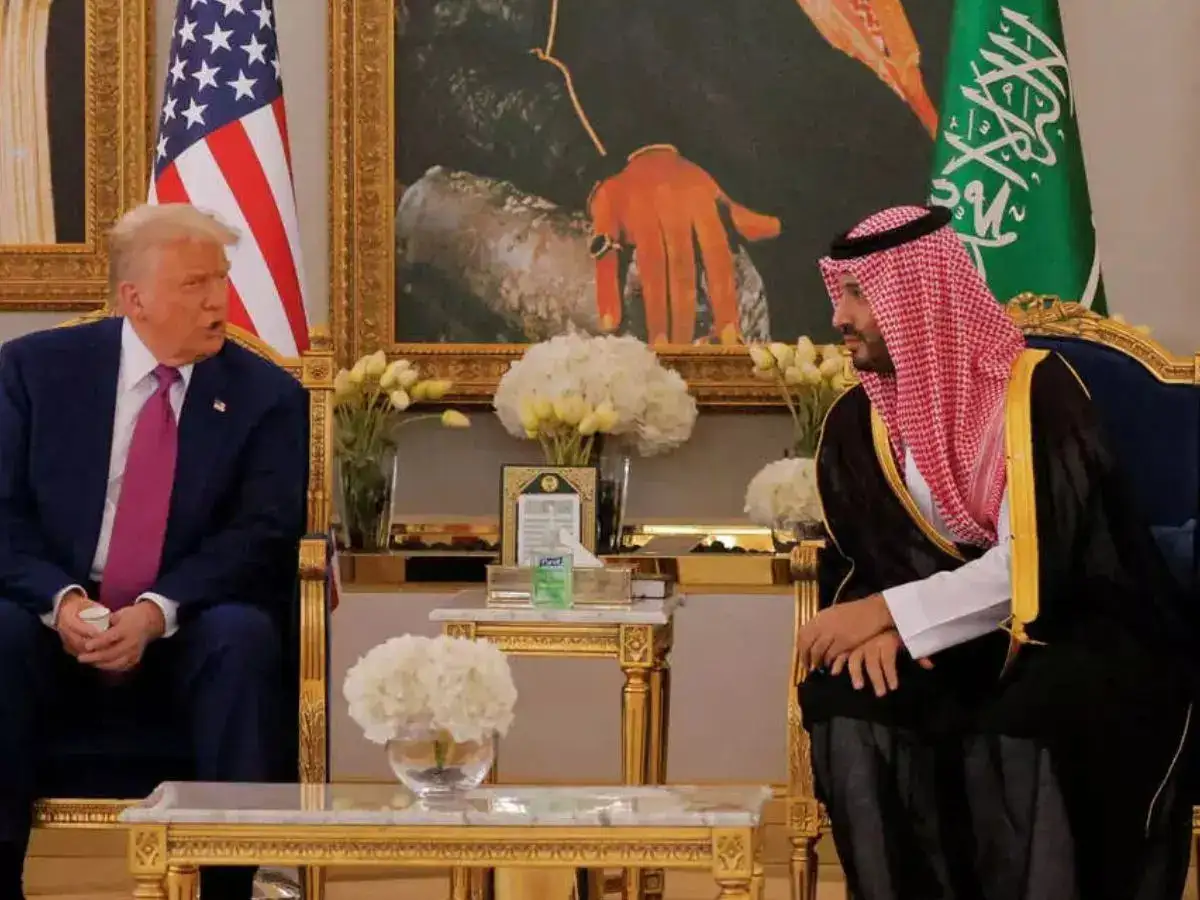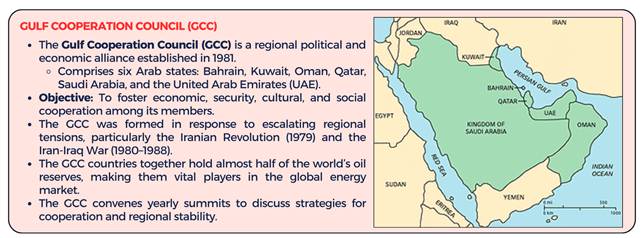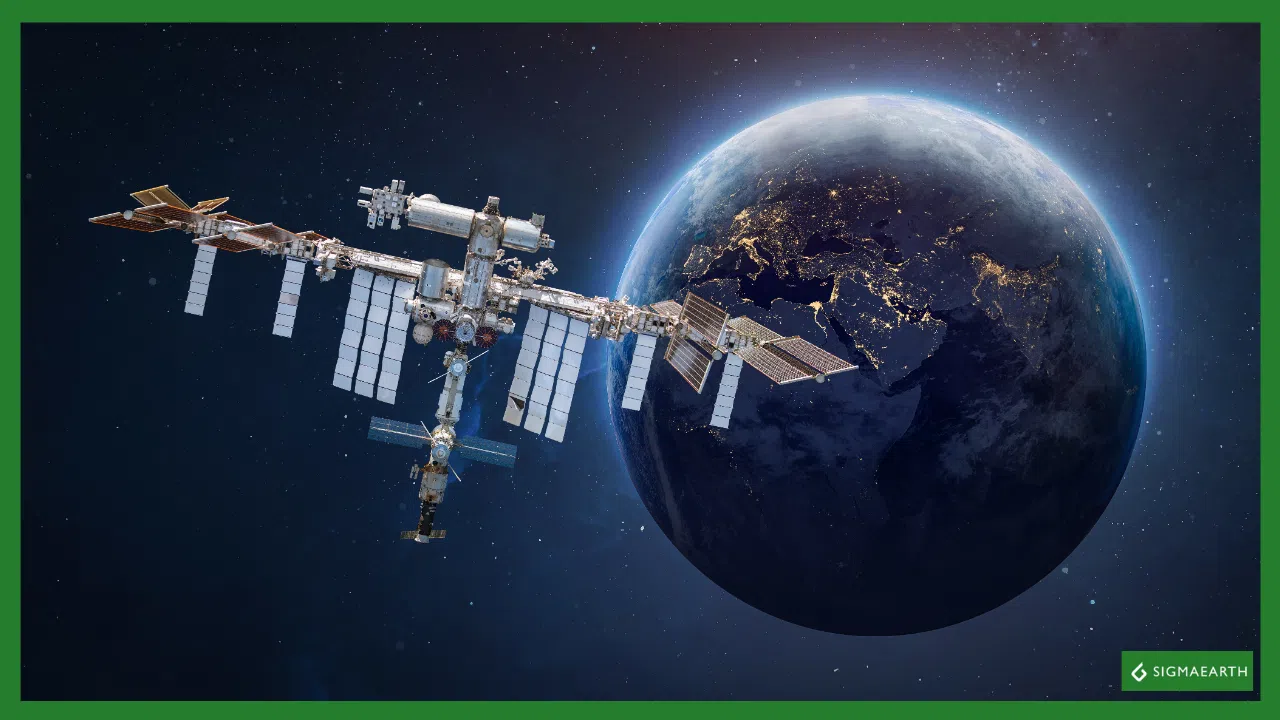- Courses
- GS Full Course 1 Year
- GS Full Course 2 Year
- GS Full Course 3 Year
- GS Full Course Till Selection
- Online Program
- GS Recorded Course
- NCERT (Recorded 500+ Hours)
- Polity Recorded Course
- Geography Recorded Course
- Economy Recorded Course
- AMAC Recorded Course
- Modern India, Post Independence & World History
- Environment Recoded Course
- Governance Recoded Course
- Science & Tech. Recoded Course
- International Relations and Internal Security Recorded Course
- Disaster Management Module Course
- Ethics Recoded Course
- Essay Recoded Course
- Current Affairs Recoded Course
- CSAT
- 5 LAYERED ARJUNA Mentorship
- Public Administration Optional
- ABOUT US
- OUR TOPPERS
- TEST SERIES
- FREE STUDY MATERIAL
- VIDEOS
- CONTACT US
From Caliphate to Corridor: Prospects for US-Gulf cooperation
From Caliphate to Corridor: Prospects for US-Gulf cooperation

Significance: GS II; IR; Major powers and Geopolitical Issues;
Why in the News?
Recently, Donald Trump made the Gulf countries (like Saudi Arabia, the UAE, and Qatar) much more important partners for the United States.
- His plan was to work closely with these countries to have more influence over the Muslim world, especially among Sunni Muslims. (breakdown from conventional diplomacy)
- By doing this, he wanted to limit the power and influence of countries like Iran, China, and Russia in the region.
- This shift fostered a trilateral partnership with India and Israel. By working together, these countries helped keep the region stable, reduced the risk of extremism, and supported each other’s growth and security.

Background:
- The 9/11 attack led to a significant change in U.S. foreign policy, with a focus on countering terrorism and engaging with Muslim-majority countries.
- Instead of spending money and manpower on wars in the Middle East, the US is now focusing on attracting investment and selling military equipment.
- This new approach helps the US save on military costs and lets it focus more on Asia (especially to compete with China).
- When the U.S. president visited recently in May 2025 to the Gulf region, both sides announced some massive deals in Trillions.
- For example, the White House said the U.S. had secured over $2 trillion in agreements with Gulf countries.
- These deals are meant to attract Gulf money into the US economy, especially in technology and big American companies (like Nvidia, Boeing, Google, etc.). In return, Gulf countries get access to US technology, security support, and big markets for their products.
|
Country |
Pledged Amount |
Notable Sectors/Deals |
|
Saudi Arabia |
$600 Billion |
Arms, AI, data centers, energy |
|
UAE |
$1.4 Trillion |
Aerospace, clean energy, tech, manufacturing |
|
Qatar |
$1.2 Trillion |
Aerospace, quantum tech, LNG |
- Reality vs. Hype: It is observed that in reality, the headline numbers are often much bigger than what actually happens.
- For example, while officials talked about $2 trillion, experts who looked closely found the real, confirmed deals were closer to $700 billion.
- The term "Gulf trillion" is used to refer to such enormous sums-often measured in trillions of U.S. dollars-associated with recent trade deals agreements between the Gulf states (primarily Saudi Arabia, the United Arab Emirates, and Qatar) and the United States.
- This phrase has gained prominence in the context of high-profile diplomatic visits.
What are the Potential concerns for the US?
- The US’s plan depends heavily on Gulf countries having enough oil money to keep investing. If oil prices drop, these investments could dry up.
- Gulf countries also need to spend a lot at home to modernize their own economies, which could compete with their plans to invest in the US.
- Diplomatically, the US faces tough choices, especially with issues like Iran’s nuclear program and the tricky process of making peace between Saudi Arabia and Israel.
- If these peace efforts fail, the US could lose influence, and countries like China might step in.
What are the opportunities for the Middle East and Asian Region?
- Opportunities for Middle East:
-
- New wave of development: The ‘Gulf Trillion’ deals are focusing on technology, smart infrastructure, and knowledge-based industries. For example, the US tech companies are helping build “AI Zones” in cities like Riyadh and Doha, turning the Gulf into a new global center for artificial intelligence and digital jobs.
- This shift can attract talent from all over the world, changing the Gulf’s image from just an oil producer to a tech hub.
-
- Social Reforms: For the first time, countries like Syria are considering joining peace agreements (like the Abraham Accords of 2020 that aimed to make the region more peaceful and prosperous), and there are talks about a new nuclear deal with Iran.
- This helps weaken extremist groups and creates a more stable region.
What are the Advantages and Disadvantages for India with Increased US-Gulf Ties?
Advantages:
- Stability in Energy Security and Trade: The Gulf remains India’s largest energy supplier, providing over 60% of crude oil and a significant share of LNG imports. Strong US-Gulf ties help ensure the stability and reliability of these energy flows, which are vital for India’s economy.
- Collaboration and Joint Ventures: India benefits from collaboration in areas like cybersecurity, artificial intelligence, shipbuilding, and defense manufacturing. US-Gulf cooperation often leads access to Gulf sovereign wealth funds for R&D and industrial projects helps Indian firms grow and diversify.
- Strategic and Security Partnerships: India’s defense cooperation with Gulf countries is expanding, including joint exercises, intelligence sharing, and counter-terrorism efforts, which enhance regional security and India’s strategic footprint.
- Market Diversification: As the US and Europe become more protectionist, the Gulf offers India a growing and accessible market for exports, reducing over-reliance on Western economies.

Disadvantages:
- Increased Competition: Closer US-Gulf ties may potentially make it harder for Indian firms to compete for contracts and investment. The US’s influence could overshadow India’s own initiatives in the region.
- Geopolitical Risks: India must carefully balance its relationships with the US and Gulf states, because if US-Gulf relations become tense or if the region faces instability, India’s energy security and expatriate welfare could be threatened.
- Dependence on External Factors: India’s reliance on Gulf energy and remittances makes it vulnerable to policy changes (diversify away from oil) or economic downturns (potentially adjust their labor policies) in the Gulfs.
Counting the Uncertainties (Conclusion):
- There’s growing competition in the region between the US, China, and Russia, making the political situation less stable. Secondly, the US’s long-term commitment to the region is still uncertain, especially since Trump has only been back in office for a short time.
- Gulf countries are now trying to balance their relationships with all three big powers to get the best deals, which makes the future unpredictable.
|
PYQ Relevance: Prelims: Which of the following is not a member of ‘Gulf Cooperation Council’? (UPSC CSE 2016)
Mains: Q. The question of India’s Energy Security constitutes the most important part of India’s economic progress. Analyze India’s energy policy cooperation with West Asian Countries. (UPSC CSE 2017) Q. How will I2U2 (India, Israel, UAE and USA) grouping transform India's position in global politics? (UPSC CSE 2022) |




